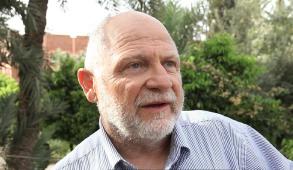Session A
 Off-GRID POWER – ANALYSIS AND PRACTICE
Off-GRID POWER – ANALYSIS AND PRACTICE
Time: Sunday, October 20, 2013 12 – 3:00PM
Presenter: Dr. Nathan Johnson, Assistant Professor, Department of Engineering and Computing Systems, Arizona State University bio is here
Abstract:
Unmet power needs in rural areas of the developing world are expected to persist for several decades. Selecting the appropriate power system and creating a viable implementation plan are not trivial problems. This tutorial compares the techno-economics of various power system options, and demonstrates how to match power needs to technical and financial solutions.
The first part of the tutorial introduces methods for selecting power system technologies using the HOMER Energy software—a software package for optimizing power system composition and size. An interactive demo is included, and steps provided to obtain and maintain the HOMER software using a free trial version provided to attendees. The latter part of the tutorial discusses implementation plans for various applications such as solar lanterns, battery charging stations, village-scale micro-grids, and similar projects. The session will conclude with an open discussion of the on-ground challenges and best practices for implementing technologies, sustaining a project, and scaling your solution.
Session B
BUILDING AFFORDABLE COMMUNITY NETWORKS
Time: Sunday, October 20, 2013 3:30 – 6:45 PM
Presenters:
Marco Zennaro & Ermanno Pietrosemoli, International Center for Theoretical Physics (ICTP), Trieste, Italy
Sebastian Buttrich, Network Startup Resource Center (NSRC), University of Oregon, Eugene, Oregon, USA
Community network is a term used broadly to indicate the use of networking technologies by, and for, a local community. Most community networks originated in rural areas which commercial telecom operators left behind when deploying the broadband access infrastructure for the urban areas. Community networks are a successful case of resource sharing among a collective. Wireless community networks use affordable wireless devices to link the community’s members.
The first part of this tutorial will focus on building wireless networks in universities, schools, villages, and other communities of interest to provide Internet access using wireless network technologies, with an emphasis on affordability and scalability. Based on field experiences working in dozens of programs around the world to build wireless infrastructure and train network developers, the session will outline strategies and techniques for planning, deploying and managing wireless networks for research, education, health maintenance and humanitarian use. The second part of this tutorial will focus on sharing resources on community networks.
Currently, the main shared resource is networking. Computing and storage resource sharing, such as is now common practice in today’s Internet through Cloud computing, hardly exists in community networks, so currently the services and applications offered in community networks run on machines exclusively dedicated to a single member. By using concrete examples from the ‘Clommunity’ project, the speakers will illustrate how Cloud computing can be implemented in a community network. The tutorial will highlight systems-based design, emphasizing participatory development to optimize the best outcome for the local user community. The audience for this tutorial will be network developers, community champions, service providers, university system administrators, and NGOs program managers seeking to build or improve the capabilities of wireless networks.






